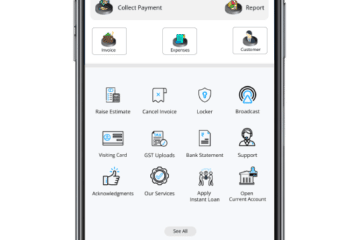How to design a business card: the ultimate guide

There’s one other fundamental action that makes the remainder of the business card configuration measure run all the more easily. You need to understand what you need to impart. What sort of brand would you say you are, as an individual or business? What do you need your business card to say, with words, however with the plan?
This is likewise its very own subject deserving conversation, so on the off chance that you need to jump further, here’s a waitlist of inquiries to pose to yourself for deciding your image character. Requiring a couple of moments of reflection about your image will assist with some business card configuration inquiries down the line, especially with regards to showing your character.
The most effective method to plan a business card
When you have your logo, image shading plan, and a smart thought of what you need your card to say about you, you’re prepared to begin. Simply follow the stages beneath to figure out which business card configuration would turn out best for you.
You can also check GRAPHIC DESIGN SERVICE MILTON
1. Pick your shape
If you’ve effectively settled on a customary rectangular business card, you can avoid ahead to the subsequent advance. Assuming, in any case, you need to find out pretty much the entirety of your choices, even fresh techniques, continue to peruse.
As printing strategies develop further developed and reasonable, experts have more space to investigate elective shapes. The printing procedure of bite the dust slicing permits you to remove any shape you need and still print in mass.
On the moderate finish of the range, you could essentially adjust the corners for a more amicable business card.
However, if you truly need to be perky or stick out, you can utilize practically any shape: creature mascots, frameworks of items your sell, or a shape that is unique.
You can even form your whole business card subject around the unique shape of sharp cutting. Cireson’s business card configuration utilizes shape to truly feature the representative picture, giving them a more friendly and in this way agreeable feel.
Regardless of whether to utilize inventive shapes relies upon the picture you need to pass on. Uncommon shapes cause you to appear to be more enjoyable and help you establish a connection, yet can adversely affect more conventional ventures. You’ll likewise need to remember coordination, for example, how the card fits in a wallet.
You might need to return to the choice of bite the dust cutting after concluding your plan in sync 6. For instance, a few organizations, for example, STIR above prefer to pass on cut spaces of their logo.
2. Pick your size
Your next choice is the size of the card. This generally relies upon the norm of the nation, so that is a decent spot to begin. Regardless of whether you intend to stick out, you need to understand how every other person is doing conflict with it.
North American Standard: 3.5 × 2 in. (88.9 × 50.8 mm)
European Standard: 3.346 × 2.165 in. (85 × 55 mm)
Oceania Standard: 3.54 × 2.165 in. (90 × 55 mm)
Regardless of the size, you generally need to think about three variables when planning:
Drain region: the furthest piece of the card liable to be taken out.
Trim line: the objective line for cutting cards.
Wellbeing line: anything outside this line is liable to cutting errors. Try not to allow fundamental components to like content or logos fall outside this line.
Investigate the accompanying manual to track down the right side of the business card when considering drain, trim, and security lines.
Business card configuration design for drain region, trim line, and wellbeing line
Drain region, trim line, and security line on a standard U.S./Canadian business card, 3.5 × 2 in. (88.9 × 50.8 mm). Plan by kiddie.
While these regions fluctuate contingent upon the size and printer, a sure thing is to set the trim line at 0.125 in. (3 mm) from the edge. From that point, set the wellbeing line at 0.125 in. (3 mm) from the trim line. That is 0.250 in (6 mm) complete from the edge of the drain region to within the security region.
3. Add your logo and different designs
Presently we start plotting the visual components of your business card plan, as a matter of first importance the logo. Your logo should become the overwhelming focus on your business card, albeit different twists and auxiliary designs can here and there be valuable too.
Remember that you have different sides available to you. One procedure is to commit one side of the business card only to the logo, while the opposite side exhibits the contact data of the individual. Notwithstanding, it’s additionally great to have the logo on the two sides, so regularly you’ll see a more modest, far removed logo as an afterthought with contact data, similarly as with Omni above.
This is only one methodology of some, however, so go ahead and try different things with logo position until you discover one for your preferences.
While moderation is a famous decision for business cards, if that vacant space doesn’t exactly measure up for you, you can fill it with extra designs. In an industry like kids’ clothing, Londres needs to accept its charming subject the extent that it will go: they develop their sheep mascot by setting sheep doodles all over and utilize a blurred foundation to keep away from the mess (likewise notice the utilization of delicate blue, a fun-loving and child cordial tone).
Extra illustrations function admirably for flaunting your image personality. Without expressly saying it, you can convey your or your image’s character through visuals, including colors. For instance, on the off chance that you need to appear to be easygoing or receptive, charming animation and some brilliant shadings would get the job done.
Another inexorably famous pattern is to impart interest and interest by leaving a little secret. Normally, brands place a silent visual with a URL on one side, and afterward all the essential clarification (counting brand name and representative’s name) on the other.
4. Add vital content
What your business card says relies upon you. Work-from-home specialists may have no requirement for a postal location, while callings that counsel vis-à-vis require it. Or on the other hand, perhaps it’s an essential decision, for example, causing you to notice your great online media following. The fact is various individuals profit with various content on their business cards.
So the subsequent stage is for you to choose what to put on your business card. The following is a rundown of some normal decisions, so you can conclude which to incorporate and bar.
Name – guaranteed. Each card needs a name.
Organization name – Another given, aside from individual brands, in which case your name is your organization name.
Occupation title – For conventional cards, incorporate your work title. This likewise helps the holder to remember what your identity is, your main thing, and surprisingly how your met.
Telephone number – Even if the telephone isn’t your favored technique for correspondence, it is to certain individuals.
Email – A business card staple; email is the new standard for non-earnest business interchanges, halfway because it permits sending reports as connections.
Site URL – Including your site URL is a non-forceful greeting for visits.
Online media – If web-based media is pertinent to your field, or you simply need to show a touch of your character, incorporate web-based media joins.
Address – Necessary for bringing clients into your office or storage area.
QR code – While not as well known as years past, a QR code is as yet a suitable easy route to moving whatever information you want. Find out pretty much every one of the benefits of utilizing a QR code here.
Motto – Completely discretionary, a trademark assists with brand character and adds a little character.
Recollect that business cards aren’t just about giving data yet in addition to holding it. Individuals may know your number, address, or URL, yet keep your card convenient on the off chance that they fail to remember it.


















